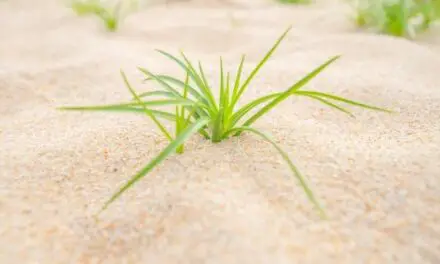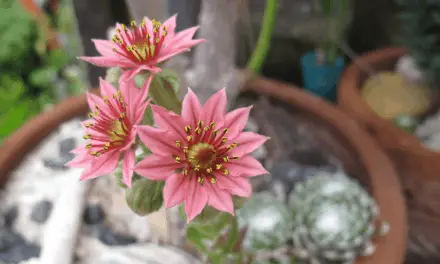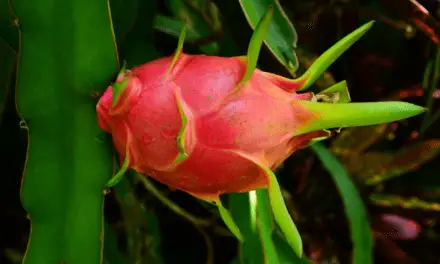Hoyas are a popular houseplant due to their waxy leaves and porcelain-like flowers which come in an array of gorgeous perfumed fragrances.
These plants are also easy to look after as long as you get a couple of elements of their care just right.
In the article, we’re going to discuss the exact care you need to provide your Hoya so that it will still be thriving on your windowsill 20 years from now.
Table of Contents
How To Care For Your Hoya Plant

These plants are fairly low-maintenance as long as you water them correctly and offer them at least a moderate amount of light.
But there’s a bit more to it than that so let’s jump in and see what makes this plant tick.
Light
Native Southeast Asia and Australasia, Hoya plants climb up trees and grow in the bright dappled light beneath the forest canopy.
These plants love bright, indirect sunlight but are also tolerant to lower light levels.
The more bright light you offer your it the faster it will grow and the more likely it will be to produce its gorgeous porcelain-like flowers.
But do your best to keep it out of strong, direct sunlight or it will dry out and its leaves will start to develop little black spots.
If you would like your plant to stay small and be less maintenance, put it in a more dimly lit spot and it will grow less and require less watering.
And if you’d like your Hoya to bloom and grow like crazy, put it in a spot that gets loads of bright, indirect sunlight.
Watering
Hoyas like their soil to dry out between watering.
To avoid overwatering, let your plant tell you when it needs water.
Feel the top inch of soil in the pot and if it feels dry against your finger, give some water.
If the soil feels moist then give it another day or two and test again.
Depending on where you keep your Hoya and the type of pot it is in, it will probably need water once every one to three weeks.
If you keep your plant in a warm and very bright location it will dry out faster and need more watering.
But, if you keep it further inside a room, in a shadier and cooler spot, it will dry out less often and require less water.
And if you’re keeping your plant in a small terracotta pot, it will need even more regular watering because the pot will dry out the soil even further.
These plants can be watered from top or bottom.
But watering from the top is easier and less time-consuming.
When watering from the top, don’t just continuously pour water into the same spot of your plant’s soil, move your watering spout around the pot, and evenly water the surface of the soil until it runs out of the drainage holes.
Related Article: Why Is My Pink Quill Turning Green? (And What To Do)
Humidity
Hoyas can manage in low humidity but they are native to the humid tropical forests of Southeast Asia and grow much faster when you raise the humidity for them.
Hoya plants with thicker stems and leaves tend to do better in lower humidity.
So if your Hoya is quite thin and seems to be struggling or not growing very much, try raising the humidity by grouping it close to other plants or using a humidifier.
Temperature
Native to tropical regions, Hoya plants like warmer temperatures and don’t do well when it drops below 50 degrees F.
Usually, a cozy room temperature of 60 to 80 F is great for these plants.
Pot And Soil
Hoyas don’t mind being root-bound and like to live in a small, shallow pot.
So, if you bring a new Hoya plant home and start thinking that its pot looks a bit small – don’t worry, it can probably last in that pot for several more years.
The biggest killer of these plants is overwatering.
And many people find it much easier to guard against root rot by using a terracotta pot because it helps to dry out the soil.
However, these plants can be fast growers so just make sure your plant’s pot is heavy enough to remain stable under the weight of a heavy plant.
Hoyas are climbing plants so some people like to have a wire coming out of the pot, usually in a rectangle, oval, or heart shape for the vines to creep around.
It is this type of arrangement that requires a heavy pot because your plant can become quite top-heavy and at risk of tipping over.
The roots of this plant can really begin to take over the inside of the pot so it’s important that the soil you use is light and airy so that the roots can easily access water and nutrients.
A good potting mix for Hoya plants is:
- One-third cactus potting mix.
- One-third perlite.
- One-third organic orchid mix.
Fertilization
Hoya plants do benefit from being fertilized.
Fish fertilizer diluted to about one-third works well.
Fertilize about twice per month when your plant is growing well.
Only fertilize when your plant is putting out new growth.
If you notice growth on your plant beginning to slow down then cut back on fertilizing or stop altogether.
Where Do You Put A Hoya Plant?
Hoya plants do well on windowsills close to East and West-facing windows.
If your window is South-facing, keep the plant back a few feet so that it’s not getting hit with direct afternoon sun.
Many varieties of Hoya like to climb and they will send out their vines to wrap around other nearby plants and anything else they can grab a hold of.
Keep this in mind when you’re going to pick up its pot or you might send your whole shelf flying to the ground.
You can put a Hoya plant anywhere in your home that receives at least low to moderate amounts of indirect sunlight.
Just keep it out of direct afternoon sun because its leaves will take damage and lose their waxy shine.
These plants don’t need a lot of light but if you want yours to bloom then keep it in a spot where it will receive as much bright, indirect sunlight as possible.
If the only window you have gets too much afternoon sun, you could hang a sheer curtain to filter the light.
If you’re not too bothered about your plant flowering, you can keep it in a lower light area – but it will need at least some light.
Also, keep in mind that the brighter the location you keep this plant the faster it will grow.
And they can end up a little top-heavy so use a good steady pot.
Are Hoya Plants Easy To Care For
Hoyas are easy to care for as long as you keep them in light, airy soil, give them lots of bright indirect sunlight, and don’t overwater them.
One of the easiest varieties to take care of is Hoya australis, from northern Australia.
If you’re just getting into Hoyas, I’d recommend starting with one of these as they are about as low-maintenance as these plants get.
How To Get Your Hoya Plant To Bloom
Hoyas produce beautiful and fragrant waxy flowers.
If you want your plant to bloom, you’ll need to mimic its naturally bright and humid environment as much as you can.
There are a couple of tricks you can use to encourage your Hoya plant to bloom but the most important factor will be giving it as much bright indirect sunlight as you can.
Light
To get your Hoya plant to bloom, you’ll have to provide it lots of bright, indirect sunlight.
If there’s not enough light your plant won’t flower and if there is too much strong direct light its blooms will burn and completely dry up.
Keep it somewhere really bright but not where direct light is hitting it.
Let It Dry Out In Spring
In a Hoya’s natural habitat it tends to go through a period of drought during the springtime.
If you can mimic this by not watering your plant for three or four weeks during the spring you can drive the growth of flowers later on.
Keep It In Small Pot
Hoyas have shallow root systems and like to be kept in small pots where their roots can mostly take over the inside of the pot.
Plants are more likely to produce flowers when grown this way.
Lower The Temperature During Winter
If you provide a slightly cooler temperature for your Hoya when it stops growing, it will be much more likely to flower when the summer comes around.
Can Hoyas Be In Full Sun?
Your Hoya plant should not be put in direct afternoon sun because it will dry it out and burn its flowers and leaves.
In nature, these plants grow beneath the canopy of tropical and subtropical rainforests and are used to receiving lots of filtered sunlight.
They can also manage in lower light conditions but they will not bloom and will grow much more slowly.
Should You Prune Your Hoya
You can prune your Hoya plant if some vines are beginning to grow too long.
The plant will then put out new growth and flower spurs on that vine.
Just be careful when you cut the vine because they secrete a type of sap that can irritate some people who suffer from allergies.
When pruning, make your cut just below a node at the length you want it cut to.
Don’t remove any more than a third of your Hoya’s foliage at any one time or it may cause its health to decline.
How To Propagate Your Hoya Plant
These plants can be propagated in a number of ways but one of the easiest is through its stems.
The stems can be rooted in water.
When looking for a stem to propagate, try to choose one that has dried up on the end because Hoyas produce flowers on the end of their stems.
You won’t want to cut off any stems that may produce flowers in the future.
When you find a healthy stem with a dried-up end, you can just remove the dry bit and it will be good for propagation.
Make sure that the part of the stem you use has a couple of leaves and lots of little nodes on it, which in turn will produce lots of roots.
Add the cuttings to a container of water and you should see roots within a few weeks.
Final Thoughts
Hoyas are incredible plants and when looked after right they can live for tens of years right there on your windowsill.
As long as you water them properly and give plenty of light, these plants can be low maintenance and a part of the family for decades.




